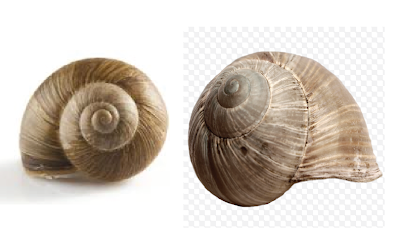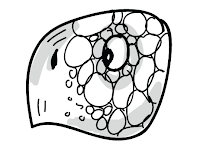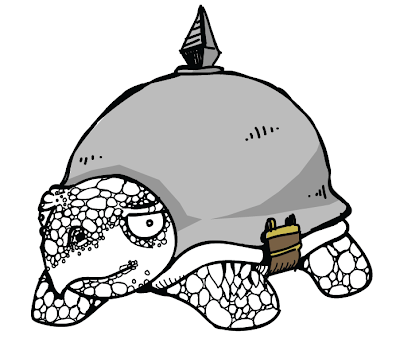BRIEF
For this first workshop we were given the text extract from the "Red book of texts" 'Shelter'. As this is a broad word and can have many meanings, the first response was to create a mind map, to stimulate ideas and thoughts behind what possible illustrations can be done to link with this topic. As a group on our table, we came up with many ideas and possibilities for what the word Shelter could mean.
From the large, group mind map, I decided to make my own with a little more depth into the areas and ideas that interested me. I researched images related to psychological issues, as there are many forms of psychological sheltering, such as depression, repression and developing disorders. I found images of straight jackets and felt these are recognisable and almost symbolise that area of mental health. I continued to illustrate some quick sketches of ideas of how I could portray what I wanted to translate.
I then thought about the other meanings of the word that interested me. I thought that the reference to war was quite interesting and that armour is used to shelter solders form harm, and that there are lots of different types of armour. I sketched a tank to see if I would be further inspired to continue in this direction. However, felt there would be no scope for easily linking the word shelter to illustrations of war unless it was made too obvious. Also I would rather look at other ideas.
When looking at war and different types of 'Shelter's used in wars, I thought of bomb shelters, armoured vehicles, and other physical things, as well as non physical things such as mental protection from traumas and wars being used to protect innocent lives and gaining control of areas. However, for illustrative purposes, I thought it would be 'easier' and more understandable if I was to look more into the physical realm of ideas relating to Shelters.
I gathered some reference images and did a sketch of a tank to start off the final ideas processes. I decided not to look at war for a while and maybe come back to it later.
I also came up with the idea to look at shelters in the natural world. This covered things such as shells and skeletons of creatures that protect them from the outside world, predators and any other damage.
I researched all the types of animals I know that have these features and thought about how I could translate this theme into my work.
Most of my successful pieces to date have included animals and a sense of humour. I think this may be because these are some areas in life that interest me and hold my attention, so i'm naturally drawn to thinking about these things more often than other themes. This is helpful as I can relate my style and knowledge of animals well to this project to design a piece good enough for my portfolio that shows how I work as well as how I can come up with good ideas and concepts based on little information.
I then decided to look at animals that I have greater knowledge on than most. These included tortoises and snails
I did some sketches based on my knowledge of tortoises and from some reference images. I was happy with the outcome of these sketches and how they look. I liked my technique of using grey to shade in large areas below the black pen line. I also like how day it is to create characters from animal's faces, by changing things such as the eyes and face shape, I can create a wide variety of characteristics.
I came up with the idea of combining two animals together, playing on the difference between both their shelters. I wanted to juxtapose the shell of a snail onto a tortoise where a tortoise shell should be. I feel this is a funny idea and would work well. Here are some basic sketches on techniques and styles I wanted to look at on the workshop day.
I looked at lots of drawing techniques such as using thick outlines, lots of dashes and lines to show surface areas and flat colours. I liked the use of lots of circles on the face of the tortoise which shows the texture of their skin as well as is visually appealing.
The brief specified that our illustration would have to be in black and white. Upon thinking about this more, I was happy for the workshop day piece to admire to these rules, but also wanted to create a piece for my portfolio. So could do one final for each. I decided to look at animals as I am confident when illustrating living things, looking at proportions and I also enjoy it.
From a combination of prior knowledge of tortoises (my girlfriend owns a pet one) and a quick look at some reference images, I came up with the idea of drawing a line drawing of a tortoise with the protective shell of a snail. This fits well with my style and use of humour and surrealism in my work. I wanted the style to be simple and cartoony and also to suggest the textures on the skin and shell with as little line as possible. I think this was portrayed well and had the intended effect.
This was my final image for the day of the workshop. I like the general outcome as it looks a little bit humorous and has a good style of illustration I believe. I like the thick lines and also the use of circles for the scales. I haven't thought about how I can use this image for the pylon press cover yet though.
My next step was to further consider this final to look good enough for my portfolio, as well as create a piece that will work in/on the front of the pylon press booklet. I looked back over my original ideas, to get an idea with more substance to it, and more areas that I could use juxtapositioning in. I thought of creating more tortoises with things that aren't their original shells being used as shelters.
I used metal and the war references to combine my research and ideas about war being used as a shelter with the reference of animals having natural shelters. I think this is a good idea and works well. I wanted to continue with this experimentation so carried on thinking of ideas.
I particularly liked this image of the tortoise with a tank shell. I thought this was funny and had potential for further experimentation and development.
I wanted to redo my final, by thunking about having more context in my design, as well as a little narrative. This would make my idea look a bit more thought out and have room for potential growth.
I tried another new style, which involved sticking to a limited selection of brush strokes and using my old block colouring method. I like this effect so far (below) and would like the whole piece to be up to this quality of work.
From the idea of the tortoise changing shells and my illustration of the tortoise with the tank shell, I came up with the idea of the tortoise 'Upgrading" to a suped-up battle shell. This idea generally works well with my style and sense of humour. I wanted the quality of this image to be consistently high, so started with a sketch to slide below my work to build upon.
This was the first look at the final design and I felt that it was coming along nicely. I liked using different brush strokes and thicknesses to how I would usually work. This allowed my to get an interesting look and feel to the piece. I was happy with how it was turning out.
I then had to look at context and how I would position the about of the image. I know that it is human nature to look at images from left to right, as well as I wanted the image to explain a story that had already happened. So I wanted him walking away from his old shell, happy with his new one.
In this piece (below) he's walking away from the shell, however, the image as a whole looks off balanced, so I then wanted to try flipping it the other way to fix this issue.
I switched them around to show him walking away from his old shell, giving the illustration automatic narrative.
I wanted to add something to his eyes, to give him more of a sleepy and dopey characteristic. To do this I played around with different positions of eyelids to see what works best. I feel I made a good decision regarding this area.
When incorporating the new eyes and the positions together, I really liked the outcome of my illustrations. The next step was looking into backgrounds for this image.
For some reason I had always imagined this scene happening on a beach. This may be because I can add footprints to show where the tortoise has been, adding more clarity to the little narrative within the image. But it might just be because the colour pallet would work well on a beach.
After gathering a few reference images, I tried to make a backdrop that drew little attention away from my final designs. To do this, i considered having no outlines on the shapes and colours in the background. I think this works well as no attention is really taken away form the tortoise of the shell.
I had a very thin black outline offset to the background, which I also liked very much. ON reflection and people's advice, I decided not to have this for the final.
I then looked at my idea of having the footprints in my image, leading from behind the old shell to the new one. I think this works well, as it creates a bring from the focal outlines part of the illustration with the flat background of the image. Showing that one has an effect of the other.
I then thought the background was still a little too intense, so lowered the colours by placing an almost transparent white rectangle over the background layer. This adds a lighter colour to the image and makes the focal point more obvious.
My next thought process referred back to this image being used for the pylon press. I wanted it to keep it's narrative element, so turned different parts of my image to separate the different layers required for the printing technique.
I then looked at the template to think about the layout. It was suggested by my tutor to have the tortoise small and on the back with the old shell large on the front, giving another look at the narrative implied, suggesting it has abandoned the shell and walked away, so when looking at the back of the booklet it becomes clear.










































No comments:
Post a Comment